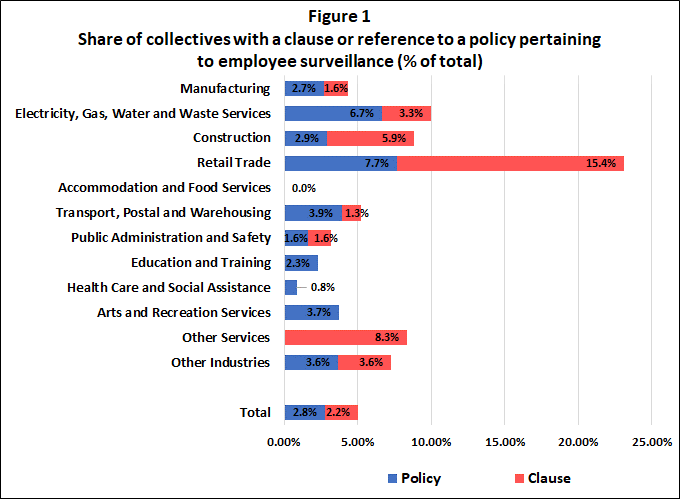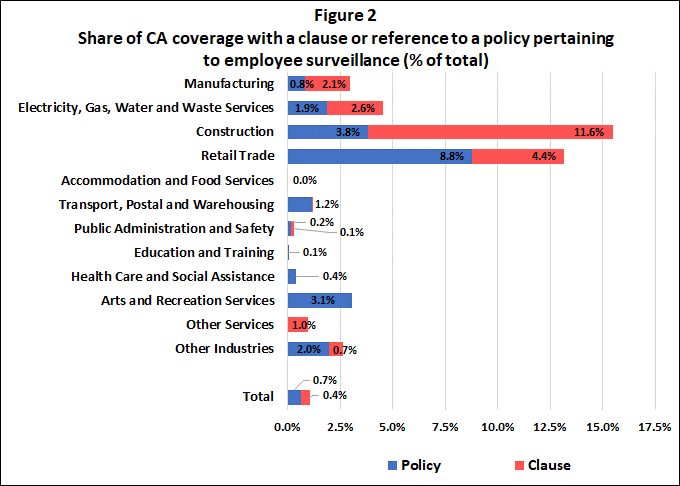COVID-19 and employee surveillance
Anyone familiar with George Orwell’s novel 1984 will relate to the menace of Big Brother watching their every keystroke and mouse click. . It seems for a growing share of the workforce, however, that dystopian reality has arrived. Nonetheless, what might have been said to be little more than a management fad looks to have blossomed into a full-fledged trend, doing so while most of us hunkering down in our ‘bubbles’.
For instance, US-based Hubstaff, which develops and markets employee time-tracking software, boasted a three-fold increase in the company’s New Zealand sales of its worker surveillance software during just the first month of the recent lockdown.
The new environment for employee surveillance
There are a variety of tools that enable bosses to monitor employees at work, and recent technological developments in this area have only added to management’s workplace surveillance arsenal. Employers have long used swipe-cards and video surveillance for safety, security and loss prevention, and the monitoring of staff e-mail during work hours and via organisational channels is nothing new. Most of the existing surveillance tools operate in isolation, focusing only on specific activities. But, distinct from this, the latest wave of such technology incorporates mechanisms that can – or will – monitor employees 24/7, including apps that can be loaded onto the omnipresent mobile phone. Moreover, the increase in employees working from home during the COVID-19 pandemic has given new impetus for organisations to track their employees’ movements and scrutinize their productivity.
The proliferation of new ways of monitoring work underscores the uncomfortable reality that many employers feel entitled to monitor their employees’ activities. “While I’m paying their salary, they should be doing my work. Their time is mine”. The latest generation of employee surveillance software, nevertheless, has transformed the modern workplace into a digital panopticon. One would have thought, though, that the ‘master and servant’ mentality was a bygone artifact of the early industrial era! Therefore, apart from the COVID-19 impetus or the feeling of entitlement, are there other reasons organisations find it necessary to monitor their employees’ activities when the latter work at home - or out of the office?
Provisions for employee surveillance in collective bargaining
Trade unions are particularly troubled that monitoring and surveillance tools, often introduced outside of the collective bargaining process, impact workers’ privacy and may be unfairly used for performance-related purposes. Notwithstanding that concern, prior to the outbreak of COVID-19, few collective agreements (CAs) included provisions related to employee surveillance. In the year to June 2019, for example, only 5 percent of CAs (1.1 percent of employees covered by a CA) either included a specific clause or made reference to a separate policy document dealing with internet or telephone monitoring of employees. There are undoubtedly far more workers on CAs that make no mention of this type of surveillance but whose work is regularly monitored by their employer, and of course there is 80 percent of the total workforce whose work is covered by an IEA who may be subject to surveillance by their employer.
This also varies across the labour market. As can be seen in Figure 1, nearly a quarter of CAs in the retail sector, either include a specific clause or refer to a separate policy document related to employee surveillance. On the other hand, no CAs covering work in accommodation and food services include such a clause or reference. Importantly, neither retail or the hospitality sector have high levels of collective bargaining coverage, meaning that most workers in this industry are covered by IEAs, thus leaving the conditions of employment and any decision on whether their work will be monitored subject to the whim of their employer. This, however, is not universally true. For instance, 1-in-10 employees on CAs in public utilities, in which coverage is currently around 28 percent, are on an agreement with a provision related to electronic monitoring of work.

The picture looks somewhat different when we consider the relative coverage of CAs that include reference to employee surveillance. While the data in Figure 2 confirms that, at 13.2 percent, retail trade is the industry where it is relatively common for an employee on a CA to have such provision, an even larger share of those on CAs in construction have a clause (11.6 percent) or reference (3.8 percent) related to employee surveillance in their agreement. Despite this, it is clear that most employees on CAs, regardless of where they are situated in the labour market, are unlikely to have provisions related to employee surveillance in that agreement. This could change, though, what with more and more people working remotely, away from the traditional workplace.

Employee monitoring, trust and productivity
There remains a perception that monitoring is a matter of seeking greater efficiency or that time spent on a job equates to higher quality work, but this is not necessarily correct. In IT, as well as in the manufacturing and service sectors, the focus is very much on the task, with employees often dotted all over the world, contributing their input in different time zones but based on work that is done at a time of day of the employee’s choosing to complete the required task. It remains important in those sectors that managers have the ability to monitor time-dependent tasks so that shift workers, in particular, are able to take over their shift at precisely the right time. Monitoring is also a means of ensuring the security and safety of staff, particularly those working on night shifts. Similarly, the presence of sales assistants on shop floors at scheduled times frequently must be monitored to ensure optimal service coverage. Moreover, time taken for travelling salespeople or delivery staff to travel to their different destinations could provide insight into efficiency opportunities of rescheduling travel times.
Yet, in spite of the potential positive effects on efficiency, employee surveillance is more often used to monitor attendance, work effort and proof of hours worked – in other words, to check up on workers and intimidate them to be more productive. This is seen as even more important when employees work at home. The irony in the expanded use of such tools as a means of enhancing productivity is that research has shown that an organisational culture of mistrust impacts negatively on employee productivity. Electronic monitoring of their work leads employees to feel mistrusted and is often seen as an intrusion upon their privacy. The result is that stress increases, morale drops, and staff turnover ultimately rises. Working from home or other remote locations requires trust between employer and employee. If performance is affected, there should be sufficient openness and trust for honest, frank, and supportive discussions between employer and employee.
Privacy considerations
The reasons for the introduction of monitoring of employees working at home should be made absolutely clear, and there are key considerations to take into account. Under the principles of the Privacy Act of 1993, people should be informed of any information being collected about them and the purpose for which the information is being collected, how it will be used, how it will be stored, who will have access to it, whether it will be able to be modified and by whom, and to whom such information may be disclosed. The information should also not be kept for longer than necessary, and it is essential to know how it will eventually be disposed of and by whom.
Above all, such information should not be collected if it intrudes “to an unreasonable extent on the personal affairs of the individual concerned”. Naturally, the individual should be entitled to access that information. Employers should also consider the perspective of trade unions who may represent their employees and consult with them as to how they regard such monitoring and its likely introduction. Finally, organisations would be wise to consider these various aspects before jumping on the Covid-19 bandwagon. The impetus of tracking employees’ movements, and the apps and devices that facilitate the monitoring of those working at home should be used carefully and not be exploited to the extent that employees’ trust in the organisation is destroyed.
Authors: Dr Stephen Blumenfeld, Assoc Professor Val Hooper and Professor Gordon Anderson, Victoria University of Wellington.
An earlier version of this article was published in The Conversation, 16 June 2020.
